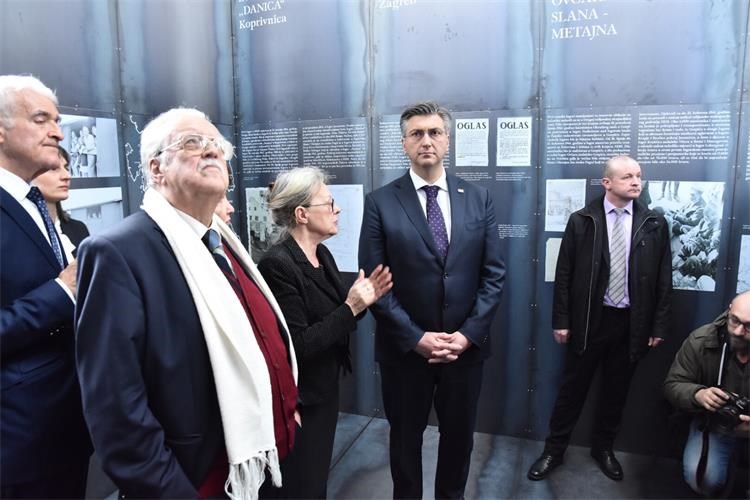


Addressing the opening ceremony of the exhibition, entitled "If I forget you... The Holocaust in Croatia 1941-1945/Final destination Auschwitz", which has been prepared by the Croatian History Museum, the premier recalled that during the recent commemoration of the 75th anniversary of the liberation of the Auschwitz-Birkenau death camp, all international leaders attending the ceremony and surviving witnesses sent messages of respect for the victims of that death factory where more than a million people had been killed.
Plenkovic added that remembering those crimes also served as a warning to mankind about the atrocities that had been committed there.
Our generation that despite everything experienced war atrocities and reappearance of ethnic cleansing on European soil three decades ago, has an additional responsibility, apart from the condemnation of such insane acts in which the negation of humanity culminated, he added.
The venue where the exhibition is staged was, at the time of the Independent State of Croatia (NDH), a site of particular suffering of Jews from Zagreb and other Croatian regions, who were rounded up here to be deported in railway wagons to concentration camps, not only to Auschwitz but also to other camps and execution sites in the NDH, particularly Jasenovac, the premier recalled.
He stressed that one cannot allow such things to sink into oblivion and that forgetting the crimes means the negation of human beings and humanness.
Plenkovic went on to say that an act of forgetting happened every time when "we as individuals or the community fail to stand up against any form of discrimination and speak up loud and clear to protect human dignity, equality and dialogue loud and clear."
Plenkovic says that "we forget every time when we fail to clearly speak about the Holocaust, notably about the consequences of the undemocratic, totalitarian and racist Ustasha regime in Croatia from 1941 to 1945."
He underscored that the exhibition unequivocally pointed to the system of terror established in areas under the control of the Ustasha regime against the Jewish, Roma and Serb people as well as against Croat antifascists and democrats who stood up against that regime.
"The exhibition is in line with the government's endeavours, policy and attitude," he said.
"The free and democratic Croatia has been and is always ready to present the painful and tragic topics from its past and express clear legal, political and civilisational condemnation of the NDH," the premier said.
"This is one more opportunity for us to remember all brave individuals who risked their lives to save their neighbours," Plenkovic said, pointing to 117 Croatians included among the Righteous Among the Nations of whom Croatians are proud.
"I am referring here also to the Blessed Alojzije Stepinac who demonstrated uncommon courage in the then Europe and helped save many Jews," Plenkovic said.
The museum's director, Matea Brstilo Resetar, said that it was the duty of "this museum, as a national and specialised institution, to highlight topics such as the Holocaust."
"It was especially challenging to state the exhibition at the authentic venue," Brstilo Resetar said, referring to the fact that Jews were first taken in groups to the site of the pavilion from where they were transported by rail to Auschwitz.
One of the speakers at the ceremony was Oleg Mandic who survived deportation from Zagreb to concentration camps.
The museum says on its website that for the purpose of the exhibition "destinies of the killed, testimonies of the survivors, and the few preserved original objects from the camp, photographs and documents from various Croatian and international museums and archives, as well as those borrowed from the families of the victims and the Righteous Among the Nations, have been divided into four thematic units: Excommunication; Concentration and Liquidation; Auschwitz (Oswiecim) – Death Factory; and, A Sparkle in the Darkness."
The exhibition, organised by the Croatian History Museum at the proposal of the Croatian Ministry of Culture, runs until 21 April.
Text: Hina